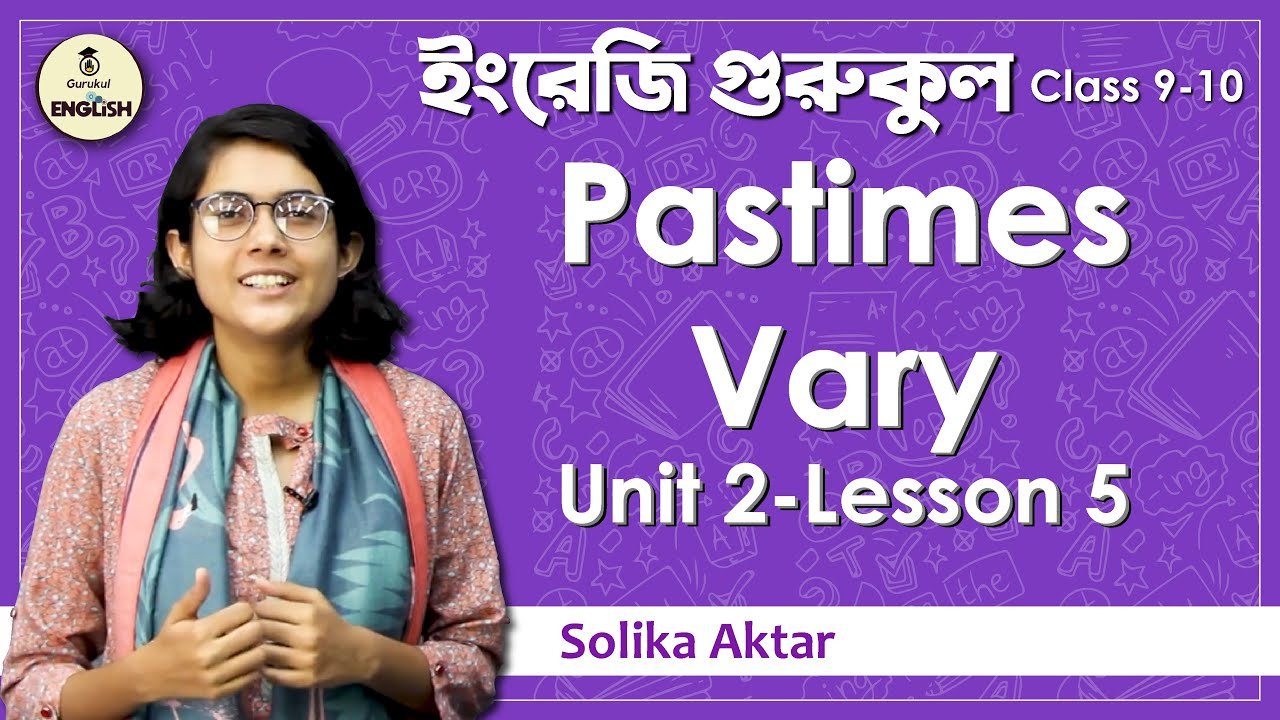Pastimes vary This class is about “Pastimes vary”. “Pastimes vary” is part of Lesson-5, of Unit-2 (Pastimes) of SSC English 1st Paper. This book is a lesson of English Today of SSC. That means the “Pastimes vary” class is useful for students of Class 9 and Class 10.
Pastimes vary
A. Read the conversation. What is it about? Do you agree or disagree? :
Tiya: Anusha, I really wonder how pastimes vary from generation to generation.
Anusha: Oh yes. I can tell you how.
Tiya: Although I don’t know exactly, I think time is a big factor.

Anusha You are right. Time changes many things. It changes our tastes and abilities. Technology has roles too. Look, there was a time when playing in the fields was very popular because we had many open fields around. Going to neighbors’ houses and hanging out in groups were popular pastimes as well.
You won’t see these activities now. The process of urbanization, the aggression of satellite television, and people’s dependence on technology have changed our lifestyle. Now boys and girls in urban and semi-urban areas are more dependent on the computer for social networking, video games, or computer-assisted programs.
Tiya: Right. But how do you know all these things, Anusha?
Anusha: Oh…I read an interesting article on people’s changing pastimes. It analyses the issue through a graph. Here it is. Read it, and I’m sure you will enjoy it.
B. Read the article. Underline the words/expressions used in the article to show the changes in the data. The first one is done for you in the text.
(গ্রাফ চার্ট আছে……)
There is a change in people’s preferences for pastimes. A recent survey shows that during the last twenty years, teenagers have gone through significant changes in choosing their pastimes. The survey results are presented through a graph which shows that there is a steady rise in young people’s tendency to watch TV. In 1990, 41% of teenagers liked watching TV which increased to 48% in the next ten years and it further increased to 52% in the next decade.
Unfortunately, the picture is grim in terms of young people’s attraction to field games and sports. While 50% of youngsters opted for games and sports in the 1990s, the figure was 12% less after a decade at 38%. Unfortunately, the falling tendency persisted through the next ten years, and by 2010 it came down to 25%. Though young people have dissociated themselves noticeably from games and sports, there is a sharp and steady rise in their association with online or computer-assisted programs.

In 1990 when the users of online or computer for pastimes were only 9%, in 2000 the number nearly doubled and reached 14%, and with a rapid increase in the next ten years it shot up to 23%.
The survey also explains the reasons for this change. It says that television has become a part of everyday life even for the underprivileged section of society. This has resulted in a larger number of young people opting for watching TV as one of the most favorite pastimes. The increasing urbanization has reduced the number of open fields.
Therefore, there is a fall in selecting games and sports as favorite pastimes, though it’s not good news for the country. The reason for selecting computer-assisted or online programs is that computer technology is getting cheaper, easier, and more popular every day. Indeed, our young generations are stepping into the e-world.
C. Now work in groups and analyze the following graph.
Elderly people’s changing attitude to pastimes in a community
………………………..(গ্রাফ চার্ট আছে……)

Details about Pastimes vary – English Grammar :
